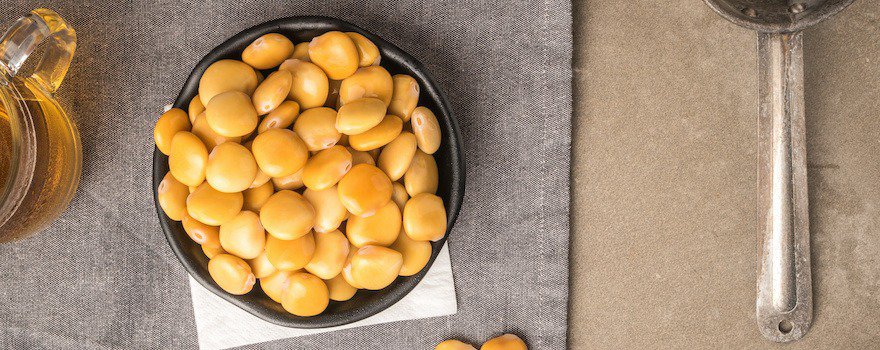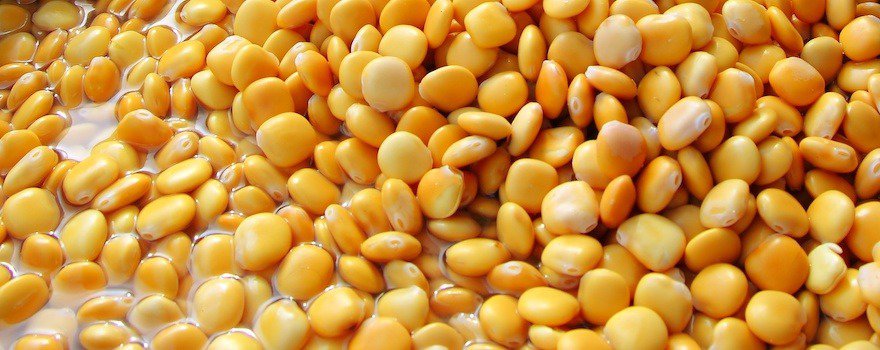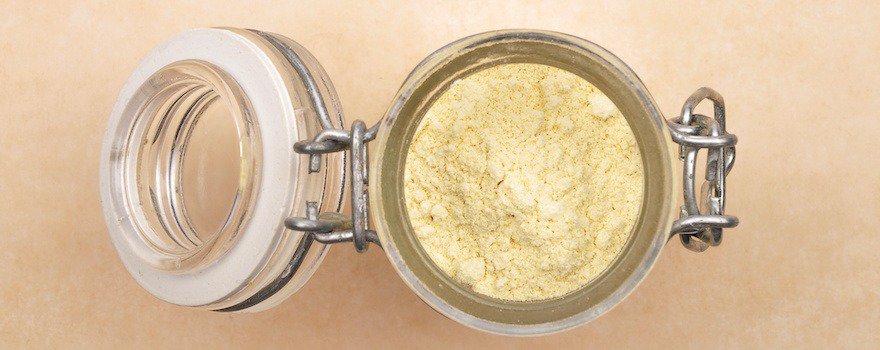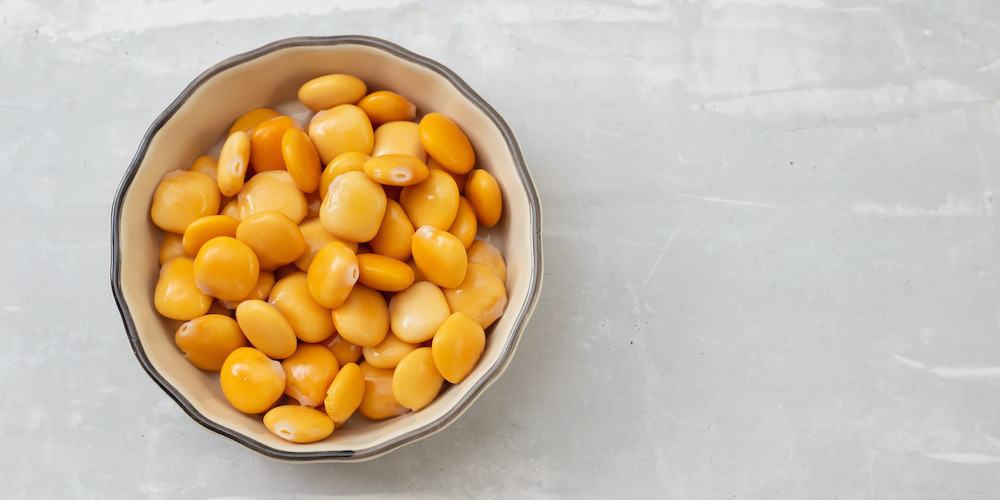BENEFITS OF LUPIN
✓ Source of protein
✓ Improves diabetes
✓ Reduces cholesterol levels
✓ Supports intestinal health
✓ Helps with weight loss
What is lupin?
Lupin is a plant belonging to the Fabaceae or legume family, like lentils, fenugreek, or carob. The genus Lupinus includes many varieties, such as white (Lupinus albus), blue (Lupinus angustifolius), and yellow (Lupinus luteus).
They are cultivated for their seeds, intended for human consumption, as fodder crops, and as green manure. Other varieties contain alkaloids (lupuline) and can be toxic.
Cultivated since ancient times, lupin is native to the Mediterranean basin and the Middle East, where it thrives in the temperate climate. Some varieties were also cultivated in North America and the Andes. The plant can reach 1.50 m in height and produces spikes with flowers in various colors. Once faded, they give way to brown-yellow seeds collected in hairy pods.
Naturally gluten-free, lupin seeds possess excellent nutritional values. Comprising up to 50% plant-based protein, they also contain fibers, vitamins, minerals, and trace elements.
They also contain omega-3 and 6 fatty acids as well as a wide range of essential amino acids: lysine, methionine, cystine, tryptophan…
Thanks to this composition, lupin is now recognized for improving diabetes, reducing blood cholesterol levels, supporting intestinal health, and promoting weight loss.

Nutritional composition
- Amino acids
- Vitamins: A, B1, B2, B3, B9, C, E
- Minerals and trace elements: potassium, phosphorus, magnesium, zinc, manganese, calcium, iron, selenium, copper
- Fatty acids: omega-3, omega-6
- Proteins
- Lipids
- Carbohydrates
- Fibers
- Water

The benefits of lupin
🌿 Source of protein
Lupin seeds are, above all, an excellent source of plant-based proteins with an average of 40 g of protein per 100 g. This is much more than beans, lentils, cereals, or even soy.
Lupin is thus a very interesting alternative to animal proteins in a vegetarian, plant-based or vegan diet. It is also ideal for athletes who wish to benefit from a good protein intake without consuming meat.
Moreover, its proteins are highly digestible, meaning they are easy to digest and bioavailable. They are thus usable by the body shortly after ingestion.
This review from the Federal University of Minas Gerais (Brazil) explored the digestibility and bioavailability of proteins contained in seeds depending on the lupin varieties.
🍭 Improves diabetes
In addition to plant-based proteins, lupin seeds contain a significant amount of fibers (27 g per 100 g), much of which are soluble fibers. This high content explains its interest in improving type 2 diabetes and reducing blood glucose (blood sugar levels).
Indeed, soluble fibers have a beneficial effect on blood sugar levels. By forming a viscous gel in the stomach, they slow down glucose absorption, decrease insulin levels, and improve sensitivity to it. Lupin fibers thus limit insulin spikes after meals.
This study from the UTE University (Dominican Republic), conducted with patients suffering from type 2 diabetes, demonstrates the benefits of lupin on blood sugar levels.
This other study from the Higher University of San Andrés (Bolivia), conducted on rats, shows how lupin stimulates insulin release.
🍳 Reduces cholesterol levels
Thanks to their fiber richness, lupin seeds increase HDL-cholesterol levels (or “good cholesterol”) that aid in excess cholesterol elimination. Moreover, they reduce LDL-cholesterol levels (or “bad cholesterol”) by limiting lipid accumulation (fats). This way, the seeds simultaneously prevent certain conditions such as hepatic steatosis, linked to fat accumulation in the liver.
The seeds also contain vitamin C, which plays an essential role in cholesterol metabolism, magnesium, zinc, and omega-3 and 6 fatty acids that stimulate the production of “good cholesterol” by the body.
This study from the University of São Paulo (Brazil), conducted on hamsters, shows the hypocholesterolemic effect of whole lupin seeds.
♻️ Supports intestinal health
The consumption of lupin seeds has beneficial effects on intestinal health. On one hand, their fibers improve transit, contribute to digestive comfort, and relieve certain issues like constipation and diarrhea. On the other hand, the seeds enrich the microbiota (formerly gut flora) as prebiotic foods do.
Thus, this plant increases the quantity of bifidobacteria that aid in carbohydrate digestion and regulate the inflammatory process. Meanwhile, it decreases the presence of bacteria of the Clostridia genus, responsible for diarrhea and colon inflammation.
This study from Deakin University (Australia), conducted on healthy men, shows how lupin contributes beneficially to intestinal health.
🏃🏻♂️ Aids in weight loss
Like psyllium and chia seeds, lupin seeds can be a valuable aid for losing weight. Indeed, the fibers they contain have a double action: on one hand, they slow down digestion and nutrient absorption; on the other hand, they act as natural appetite suppressants by enhancing the feeling of fullness, thus limiting the desire to snack throughout the day.
They also contain tryptophan, an essential amino acid that induces a feeling of satiety. It is also the precursor of serotonin, a hormone that regulates, among other things, appetite and satiety.
This study from the University of Western Australia (Australia), conducted on humans, shows how lupin consumption promotes satiety.

How to consume lupin?
Lupin seeds
Lupin seeds contain a bitter substance that is not pleasant to the palate. To eliminate it, it’s important to soak them in water for 48 to 72 hours before cooking. Then, cook for 25 to 45 minutes in boiling salted water.
When cooked, they can be added to salads, soups, stews, and vegetarian patties or cakes… You can also prepare them in brine or in tramousse, a typical Mediterranean dish served as an appetizer. Finally, they are ideal for making homemade hummus, tapenade, and spreads.
To avoid the long soaking and cooking process, it’s also possible to buy jarred lupin seeds, ready to consume.

Lupin flour
Like buckwheat, rice, or corn flour, lupin flour has the advantage of being gluten-free. It is therefore suitable for the diet of people with celiac disease. It is used in recipes for biscuits and cakes, in baking preparations, cakes, pancakes, crepes…
Use about 1/3 lupin flour and 2/3 other flours. It has a pleasant nutty flavor that pairs well with many sweet or savory dishes.
Like chickpea flour and soy flour, lupin flour is an excellent alternative to egg yolk for thickening your preparations (pastries, quiches, mayonnaise…). Mix 10 g of flour with 40 ml of water to replace the equivalent of an egg.

Consume sustainably: favor local, organic, and fair-trade lupin
✓ Australia, Poland, and Russia are currently the main producing countries of lupin seeds. France, on the other hand, produces about 15,000 tons/year. The sweet varieties, without bitterness, are the most cultivated. Most of the production comes from the west of the country, such as in Poitou-Charentes, the leading lupin-producing region.
✓ If possible, prioritize lupin seeds cultivated in France to support local producers. Prefer seeds from organic farming and fair-trade sectors.
Dosage
As they contain potential allergens (conglutins), lupin seeds should be consumed in moderation. Even though there is no specific recommended dosage, be careful not to eat them excessively.
Lupin seeds: 20 g per person
Lupin flour: 25 to 30% of the preparation
Contraindications and side effects
Consuming lupin comes with certain contraindications:
- Due to a possible cross-allergy, individuals allergic to peanuts, beans, soy, lentils, and peas should avoid consuming it.
In the event of excessive seed consumption, the following side effects may appear:
- Abdominal pain
- Diarrhea
- Allergic reaction
If you experience any side effects, stop consumption and consult a doctor.
History, culture, and market
Like buckwheat, lupin is an excellent green manure: it can capture nitrogen from the air and restore it to the soil. It is an easy-to-grow plant that adapts to many soils, even those poor in nutrients or acidic.
To enrich the soil, lupin is equipped with proteoid roots that make phosphorus available and usable by subsequent crops. In this way, it advantageously replaces other more demanding crops.
This legume seems to be a plant of the future against soy and corn, which are very water-intensive and contribute to global deforestation.
File produced by Julia Perez
Sources and scientific studies
Tomasz Stępkowski, Colin E. Hughes, Ian J. Law, Łukasz Markiewicz, Dorota Gurda, Agnieszka Chlebicka, and Lionel Moulin, 2007. Diversification of Lupine Bradyrhizobium Strains: Evidence from Nodulation Gene Trees.
Márcia Regina Pereira Monteiro, Aline Costa, Suellen Fabiane Campos, Mauro Ramalho Silva, Cassiano Silva, Hercia Martino, Marialice Pinto Coelho Silvestre, 2014. Evaluation of the chemical composition, protein quality, and digestibility of lupin (Lupinus albus and Lupinus angustifolius).
Marco Vinicio Fornasini Salvador, Sandra Victoria Abril-Ulloa, José Patricio Beltrán Carreño, Elena Villacrés, Lourdes Cuadrado-Merino, Francisco Robalino, Rolando Sánchez, Paul Stalin Ricaurte Ortiz, Erika B Muñoz, Napoleón Benjamín Benítez Loza, Manuel E Baldeón, 2019. Efficacy of a Lupinus mutabilis Sweet snack as a complement to conventional type 2 diabetes mellitus treatment.
Silvia Zambrana, Lena C E Lundqvist, Orlando Mamani, Sergiu-Bogdan Catrina, Eduardo Gonzales, Claes-Göran Östenson, 2018. Lupinus mutabilis Extract Exerts an Anti-Diabetic Effect by Improving Insulin Release in Type 2 Diabetic Goto-Kakizaki Rats.
Gustavo Guadagnucci Fontanari, José Paschoal Batistuti, Robison José da Cruz, Paulo Hilário Nascimento Saldiva, José Alfredo Gomes Arêas, 2012. Cholesterol-lowering effect of whole lupin (Lupinus albus) seed and its protein isolate.
Stuart C Smith, Rachel Choy, Stuart K Johnson, Ramon S Hall, Alida C M Wildeboer-Veloo, Gjalt W Welling, 2006. Lupin kernel fiber consumption modifies fecal microbiota in healthy men as determined by rRNA gene fluorescent in situ hybridization.
Ya P Lee, Trevor A Mori, Sofia Sipsas, Anne Barden, Ian B Puddey, Valerie Burke, Ramon S Hall, Jonathan M Hodgson, 2006. Lupin-enriched bread increases satiety and reduces energy intake acutely.



